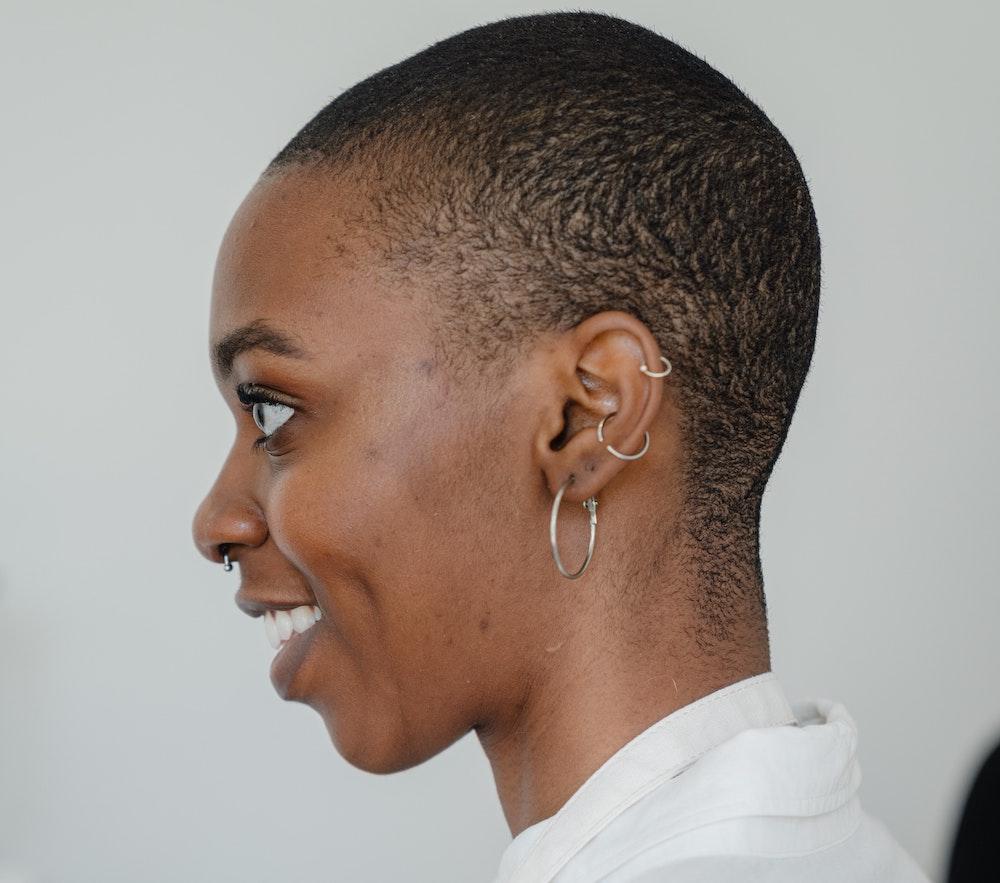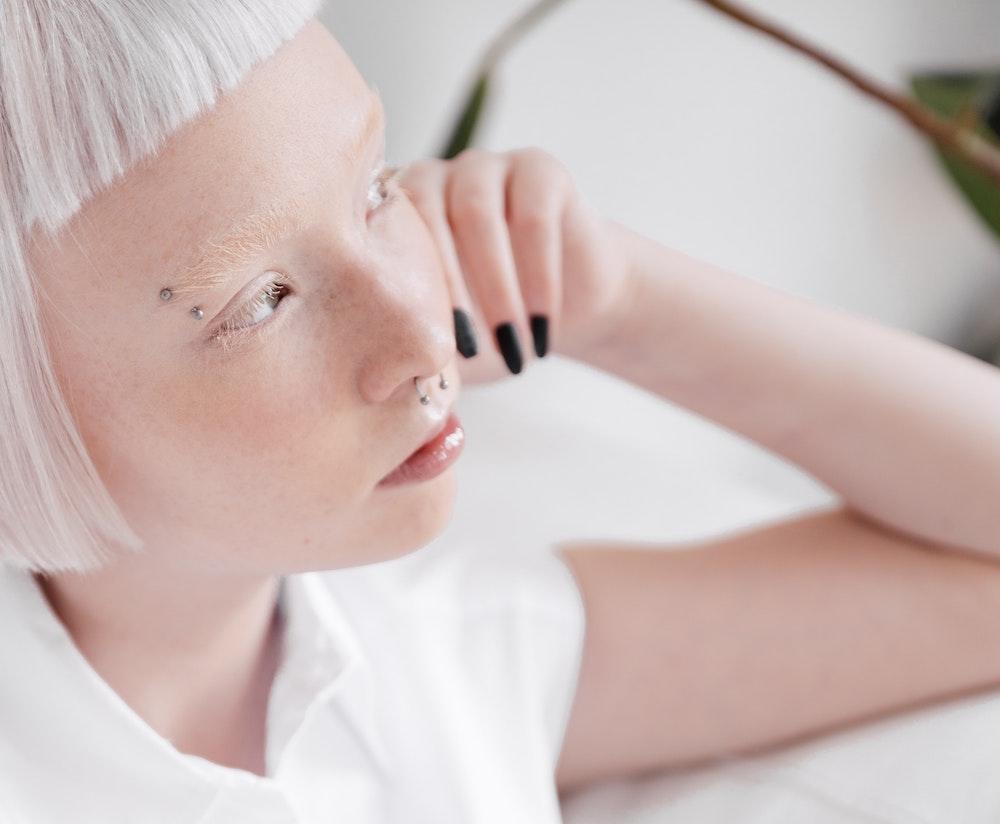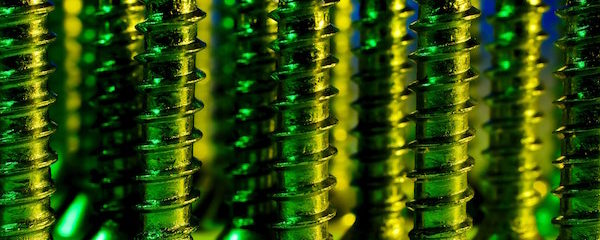Stay Safe and Stylish: The Ultimate Guide to Jewelry for New Piercings February 28, 2020 – Posted in: Informative, Piercing Advice – Tags: healing best practices, jewelry for new piercings, new piercing safety, piercings aftercare, proper jewelry for new piercings, starter jewelry
Jewelry for new piercings highlights:
- Three things need to be considered when choosing your starter jewelry: shape, size, and materials.
- New piercings need to be fitted with a longer jewelry piece to accommodate swelling. You can (and should in some cases) have your piercer change your jewelry to a smaller size when swelling has gone down.
- Titanium is the recommended material for starter jewelry. It’s inexpensive, and it does not contain alloys that might irritate your skin.
When you get a new piercing, it’s exciting to think about all the different jewelry options available to you. It’s also important to remember that your piercing is still a small wound that requires proper care and attention.
As with any minor injury, it’s crucial to choose the right starter jewelry to prevent complications down the line. Choosing the wrong jewelry can lead to issues like embedded jewelry, piercing rejection, and irritation.
Your piercer is an expert in the field and can provide valuable guidance when it comes to selecting your initial jewelry. Depending on the type of piercing, you may have a choice in the type of starter jewelry you prefer. However, it’s important to weigh your options carefully, as you’ll be wearing this jewelry for at least a few weeks until the swelling subsides.
So, what should you consider when choosing the proper jewelry for your new piercing? Here’s our guide.

Photo by Ketut Subiyanto
Jewelry style
The type of jewelry used in a new piercing goes beyond aesthetics. It’s important to select jewelry that is specifically designed for your type of piercing and that feels comfortable in your body.
One of the biggest risks of choosing the wrong jewelry is piercing rejection, where your body sees the jewelry as a foreign object and tries to expel it. To avoid this, it’s essential to select jewelry that’s a good fit.
For example, when you get your eyebrow pierced, the recommended starter jewelry will likely be a curved barbell. The curvature of this jewelry type matches your anatomy better than other styles (like a straight barbell) so that it feels more natural to your body.
Gauge size
Jewelry gauge refers to the thickness of the post that goes through the actual piercing. The proper gauge of your starter jewelry will depend upon the gauge of the needle with which you were pierced.
In many piercings, you may have some choice when it comes to the gauge. Which gauge you choose is mostly guided by aesthetics, since larger gauges allow for larger jewelry pieces, but health concerns limit some piercings to certain gauge sizes. Cartilage piercings, for example, are often pierced at either 16 or 18 gauge. Anything smaller might tear through the skin after a bad snag, and anything larger might cause damage during piercing. It is important to find a piercer you trust and let them guide you to a gauge size that fits your aesthetic desires and promotes healing.
If you want a larger gauge, you can stretch areas of your body on your own—stretched lobes are by far the most popular—but you’ll still have to begin at a smaller gauge, allow your body to heal, and stretch slowly from there to reach the gauge that you want.
Once pierced with a certain gauge, you need to make sure that your jewelry fits just right. When the jewelry sits in your piercing, it shouldn’t feel loose. At the same time, it should not press against the skin or feel as though it’s stretching the hole.
Caring for a New Piercing
Choosing proper jewelry is only one aspect of caring for a new piercing. You must also clean it 2 – 3 times daily with a piercing aftercare saline solution, keep the piercing safe from snags, friction, or pressure, keep the jewelry still, and avoid swimming or dampness.
Barbell length
When choosing jewelry for your piercing, it’s essential to choose jewelry that’s large enough to allow for swelling, regardless of the style you prefer.
Your piercer can assist you in selecting the correct barbell length, but it’s critical to keep an eye on it throughout the healing process. If the barbell is too short, the ends of the jewelry may press against the piercing, causing embedding. On the other hand, if the barbell is too long, it can get caught on something, causing trauma to the piercing site.
If the length of your barbell causes discomfort, it’s best to have your piercer examine it. They can determine if it’s the incorrect size and replace it with a new piece of jewelry. During the healing process, never attempt to change your jewelry on your own, as this may cause serious damage to the piercing. Always seek the assistance of a professional with the necessary expertise to change your jewelry correctly.

Photo by SHVETS production
Jewelry material
Although body jewelry uses many different materials, there are actually very few materials approved for healing piercings.
Many popular jewelry materials are alloys that contain metals that can irritate healing piercings, even if you’ve never had a metal allergy before. It’s important, therefore, to choose purer metals, especially those that are nickel-free. There are also some plastic and glass options for those who have issues with all types of metals.
The Association of Piercing Professionals lists seven materials appropriate for healing piercings. Their approval is based on two standards: “The material in a healing piercing should be able to withstand the heat and pressure of autoclave sterilization, and should be inert and compatible with the body so it doesn’t cause irritation, allergy, or infection.”
According to those standards, initial body jewelry should be made from:
- F138 implant-grade steel
- Implant-grade titanium
- Niobium
- 14k or 18k yellow, rose, or white gold (be sure that you choose white gold without nickel)
- Platinum (incredibly high quality, but quite expensive, so it’s not very popular as a starter jewelry choice)
Threading
Body jewelry with threading (the spiral part of a screw) comes in two types: internal threading and external threading.
Internal threading is when the threading is located inside the post of the jewelry, while the ball or backing slips into the post to tighten.
External threading is when the threading is located outside the post of the jewelry that slips into the ball or back to tighten.
Although it may seem like a small detail, the difference between internal and external threading is actually quite important. Jewelry with internal threading is usually considered higher quality because it’s more difficult to create. This is because the threaded piece will never touch the healing jewelry as the post is pushed through the new piercing.
Even the tiniest snag on a healing piercing can cause damage, so it’s crucial to choose internally threaded jewelry. Avoid externally threaded jewelry at all costs, even in healed piercings, because pushing an externally threaded post through a new piercing can tear at the delicate skin, which can slow down the healing process. Don’t compromise your piercing for cost savings; it’s not worth it.
It’s easy to get excited about a new piercing, but in all aspects of piercing aftercare, patience is key. Much of the success of your piercing will depend upon your starter jewelry, so take care when making your choice, listen to your piercer’s recommendations, and know which jewelry choices will work best for your piercing.
Once you’ve chosen the right starter piece, the rest is up to you. You’ll need to make sure that you have all of the proper aftercare products you need and keep the piercing clean throughout the entire healing period.








